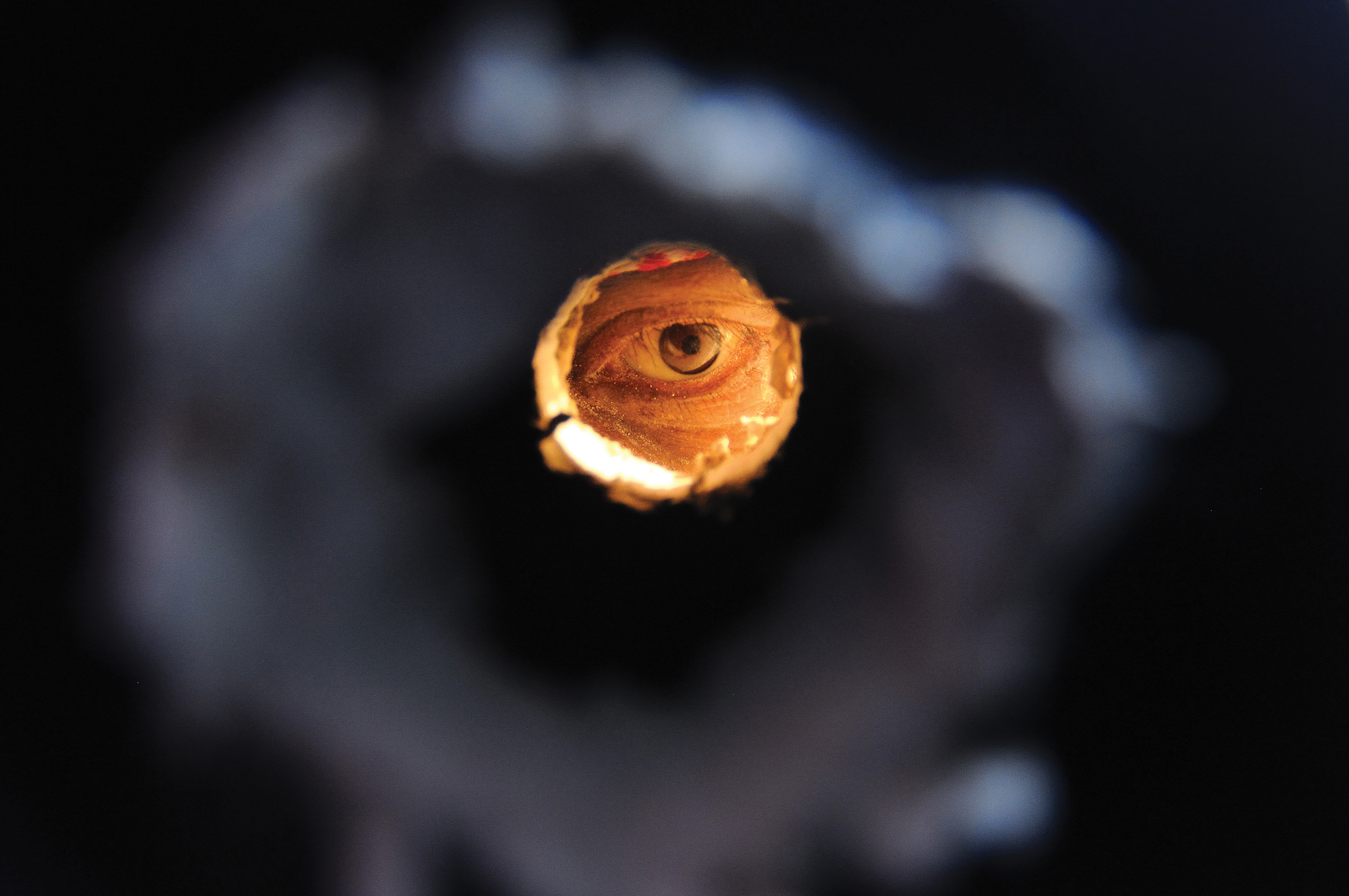A dimly lit room of ordinary size takes up the Hammer Projects’ space with just one peculiarity ““ a small hole in the wall that seems to blend in with the rest of the room. As visitors casually walk in and look through the hole, they find that someone ““ or something ““ is looking back at them.
The hole in the wall suddenly garners excitement and makes up for its inconspicuous presence by interacting with the audience, as they realize a stranger is staring back. It seems ironic that although the title “I Am Here” suggests the figure will reveal himself, the installation is partially concealed.
Originally made back in 2006, “I Am Here” is an installation by two contemporary Chinese artists, Sun Yuan and Peng Yu. Their work is now on display at the Hammer Museum as the artists’ first exhibition in the United States.
The eye within the hole belongs to a mannequin resembling a tall Middle Eastern man dressed in traditional wear, including a worn-out robe and a red head-wrap. The figure is slouched with his hands on the wall and his eye meeting the opening in the wall, as if he were intently observing all who came through the other room.
“At first, I thought it was a pretty dull exhibit with just a hole in the wall, but I realized as I looked through the hole, someone was staring back at me. The roles can be reversed, and maybe the audience is being watched, as art by the art itself,” said Kathy Mak, an art history graduate student.
Everything from the mannequin’s posture to his expression is recreated with accurate realism, reflecting the style of the two artists’ previous installation pieces.
Irony and interaction are two elements that are often present in the work of Yuan and Yu. They started working together in 2000, and have made several collaborative installation pieces in the past, showing their works internationally.
Their style, in addition to being interactive, is known to be controversial as they often use questionable media to channel their expression.
“For this piece the materials are considered to be very conventional ““ just a mannequin and clothes ““ but most of our other works are made of non-traditional materials. In the past we’ve used live animals, pelts, human participation and even cadavers as forms of artistic medium,” Yu said.
Some of the duo’s other works that have used more extreme materials include the performance installation “Body Link” from 2000. The piece featured cadavers of conjoined twins with blood transfusion tubes running through their bodies, the performance aspect being the two artists themselves transfusing their blood. “Body Link” raised the issue of human organ trafficking along with the spread of HIV through unsafe means of receiving organs from unhealthy or unwilling donors.
“I Am Here” addresses a different issue by portraying an international perspective on political events between the United States and the Middle East. Because the timing and the concept of the original piece back in 2006 was cohesive with the tenuous relations between the United States and the Middle East, the project seems to be making a strong political statement. Yuan and Yu find that current events inspire much of their work, but they don’t necessarily have strong opinions on the topics themselves.
“We think the only reason the United States is even interested in the Middle East is for oil, but as for our art reflecting our political beliefs, we find that there is somewhat of a disconnect,” Yuan said. “Reality is what we use to invent art, but we don’t necessarily use art to reflect the reality.”
“I Am Here” also represents commentary the artists have on daily life. The simple phrase “I Am Here” holds multiple meanings that explain more philosophical ideas of what Yuan and Yu want to express, such as always being under the watch of someone else.
“”˜I Am Here’ means two things. One, is that in reality, whatever we do or say is under a watchful eye. The eye of someone is always there, and it says “˜I’m here,'” Yuan said. “The second is that as super-realist artists, it seems as though our work is not cohesive, but perhaps people have actually seen our work but haven’t made the connection. In that way, we are saying “˜we’re here.'”
